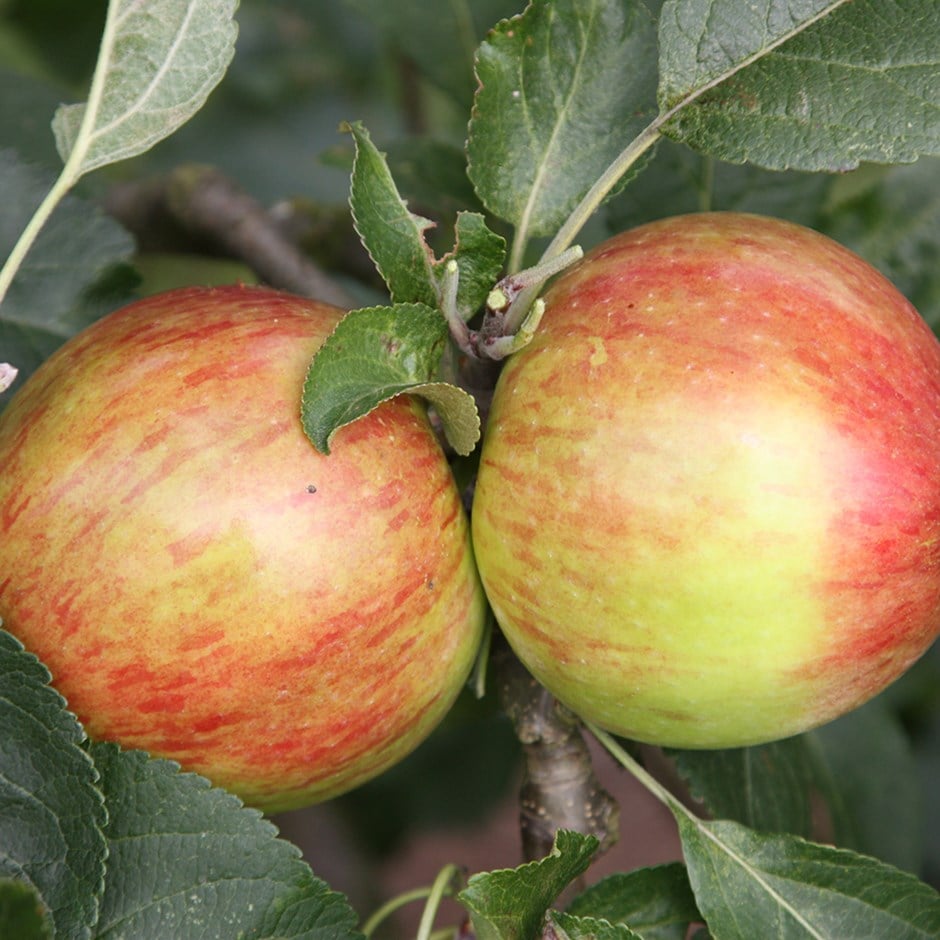apple 'Laxton's Fortune'
eating / dessert apple ( syn. Malus domestica 'Fortune' )
- 9 litre pot | M26 root stock | 1.2m
- £49.99
- In stock (shipped within 3-5 working days)
- bare root | M26 root stock | 1.2m
- £34.99
- In stock (shipped within 3-5 working days)
Delivery options
- Standard £7.95
- Position: full sun
- Soil: moderately fertile, moist, well-drained soil
- Rate of growth: average to fast
- Flowering period: April to May
- Hardiness: fully hardy
‘Laxton's Fortune’ is a red-flushed, dessert apple with ivory to cream-coloured flesh. A versatile choice for snacking, salads, or baking, this mid-season variety has a sweet, aromatic, and subtly tangy flavour. Developed from 'Cox's Orange Pippin', 'Laxton's Fortune' retains a similar flavour profile with improved disease resistance. This easy-to-grow biennial bearer fills the gap between early and late dessert apples.
Pollination information: This apple belongs to pollination group 3, however it is partially self fertile, so does not need a pollinating partner to produce a crop of apples. For a bumper crop, it can be cross-pollinated with other apples in this group.
Pollination information: This apple belongs to pollination group 3, however it is partially self fertile, so does not need a pollinating partner to produce a crop of apples. For a bumper crop, it can be cross-pollinated with other apples in this group.
When planting your apple tree, prepare a hole up to three times the diameter of its root system. Fork over the base of the pit in readiness, incorporating plenty of organic matter into the backfill and planting hole. Avoiding frozen and waterlogged soil, trees should be planted out as they arrive. If you've ordered a bare root tree, soak the roots in a bucket of water for half an hour prior to planting - or if this is not possible, they can be heeled in temporarily, covering their roots with soil, or potted up. Once in the ground, stake firmly and keep the base weed-free. Apply a balanced fertiliser in early spring to support growth and fruiting and provide regular watering during hot, dry spells. The main winter prune, avoiding frosty conditions, involves removing dead, dying, and diseased wood to create an open crown. Additionally, reduce leaders and laterals by a third to establish an airy structure without crisscrossing branches. In August, summer prune by shortening side shoots longer than 20cm (8”) back to three leaves, promoting fruit ripening and encouraging more fruit buds.
